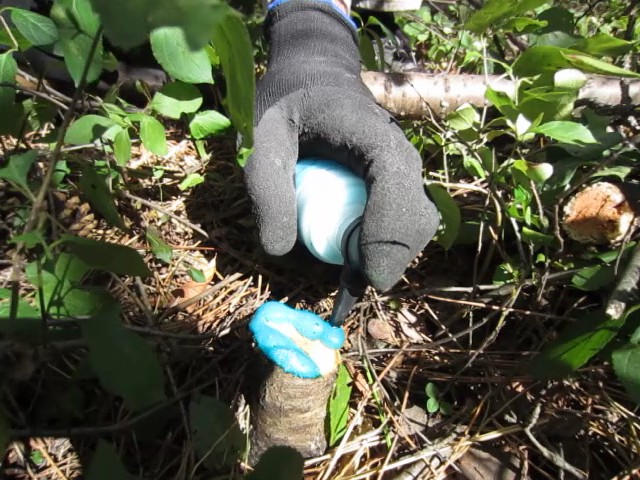Table of Contents
Buckthorn is a highly invasive plant species that spreads aggressively, outcompeting native vegetation and disrupting local ecosystems. If left unmanaged, it can overtake entire landscapes, making its removal a priority for homeowners, conservationists, and land managers. However, the cost of removing buckthorn varies depending on the size of the infestation and the method used. This guide provides insight into the average costs for buckthorn removal in 2025, how to identify it, and the best removal strategies to ensure it doesn’t come back. If you’d like to learn more about these topics, then read our blogs Identifying Buckthorn in your Woodlands: 5 Obvious Signs and 7 Ways to Effectively Remove Buckthorn.
What is Buckthorn?
Buckthorn refers to two invasive species: Common Buckthorn (Rhamnus cathartica) and Glossy Buckthorn (Frangula alnus). Originally introduced as an ornamental shrub, it has spread aggressively across North America. It thrives in various soil types, produces dense thickets that shade out native plants, and releases chemicals into the soil that inhibit the growth of other vegetation. Buckthorn is difficult to eradicate because it regenerates quickly and produces large amounts of seeds that can remain viable in the soil for years.
What Does Common Buckthorn Look Like, and How Can I Identify It?
Identifying common buckthorn is crucial for early removal. Here’s how to recognize it:
Key Characteristics of Common Buckthorn
- Leaves: Oval or elliptical, dark green, with slightly serrated edges and prominent veins. They stay green late into the fall.
- Bark: Dark gray to brown with rough texture and visible lenticels (small raised pores). When cut, the inner bark is orange.
- Twigs: Often end in small, sharp thorns.
- Berries: Small, black, and clustered. While birds eat them, they are toxic to humans and can cause digestive issues.
- Growth Habit: Forms dense thickets, crowding out native plants. It can grow up to 20-25 feet tall if left unchecked.
Factors Affecting Buckthorn Removal Costs
Several factors impact the cost of buckthorn removal:
- Size and Density of Infestation – Larger, denser growth requires more labor and equipment.
- Removal Method – Costs vary based on whether manual, mechanical, chemical, or controlled burning methods are used.
- Labor Costs – Hiring professionals is more expensive than DIY removal but ensures effective long-term results.
- Disposal and Site Restoration – Proper disposal and replanting of native species add to the total expense.
- Permit and Regulatory Costs – Some municipalities require permits for chemical treatments or controlled burns.
How We’ll Remove Your Buckthorn and End It for Good
A multi-step approach is necessary to ensure buckthorn is removed permanently. Here’s how professionals tackle infestations:
Step 1: Site Assessment
- Evaluating the size and density of the infestation.
- Identifying the best removal strategy based on site conditions.
Step 2: Physical Removal
- Small Infestations: Hand-pulling or using root wrenches for young plants.
- Large Infestations: Using machinery like brush cutters or forestry mulchers for mature buckthorn. If you’d like to learn more about buckthorn removing tool then read our blog Special Tools for Removing Buckthorn: 5 Failproof Choices
Step 3: Chemical Treatment
- Applying herbicides to freshly cut stumps to prevent regrowth.
- Selective treatment to minimize damage to native plants. If you’d like to learn more about Chemical treatment then read our previous blog Using Herbicide to Kill Buckthorn: Tips from a Pro

Step 4: Proper Disposal
- Chipping or hauling away cut plants.
- Ensuring seeds and roots are not left behind to prevent reinfestation.

Step 5: Site Restoration
- Replanting native vegetation to restore ecological balance.
- Ongoing monitoring and maintenance to prevent reinfestation.
Average Cost Breakdown for Buckthorn Removal in 2025
| Removal Method | Estimated Cost |
|---|---|
| Manual Removal (Hand Pulling) | $50–$150 per hour (for professional labor) or DIY tool costs ($100–$200 for root wrenches) |
| Mechanical Removal (Machinery) | $1,500–$5,000 per acre, depending on terrain and density |
| Chemical Treatment (Herbicide Application) | $100–$500 per acre (professional application); DIY herbicides $30–$100 per gallon |
| Controlled Burning (Prescribed Fire) | $1,000–$3,000 per acre |
| Disposal and Hauling Fees | $100–$500 |
| Site Restoration (Replanting Native Species) | $500–$2,000 per acre |
Additional Considerations
- Permit Requirements – Some areas require permits for chemical treatments or controlled burns.
- Long-Term Maintenance – Buckthorn seeds can remain in the soil for years, requiring periodic follow-up treatments.
- DIY vs. Professional Services – While DIY methods are cheaper, professional services ensure long-term effectiveness.
Conclusion
Buckthorn removal is essential for restoring native ecosystems and preventing long-term environmental damage. In 2025, removal costs vary widely based on infestation severity and the chosen method. Whether opting for manual removal, mechanical clearing, chemical treatment, or controlled burning, taking proactive steps to prevent regrowth is critical. Investing in proper site restoration and ongoing maintenance will ensure buckthorn is eradicated for good, helping to maintain a healthy and balanced landscape. For more detailed information and tailored advice, visit our page on buckthorn removal. For support on your next buckthorn removal project, please feel free to reach out through our contact form, and our team will be happy to help.



